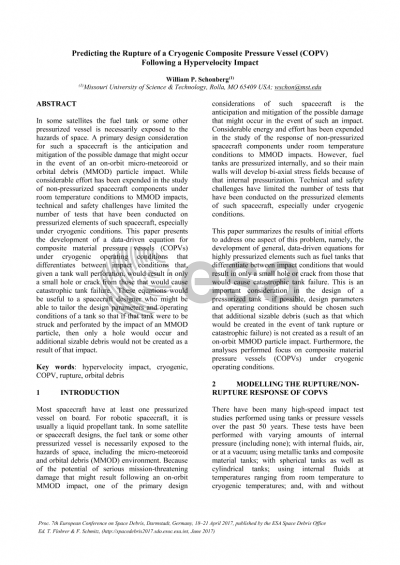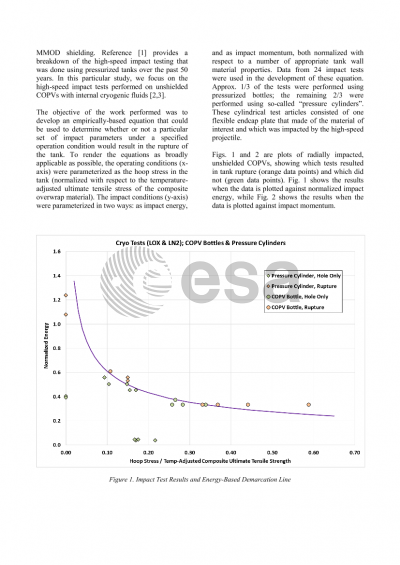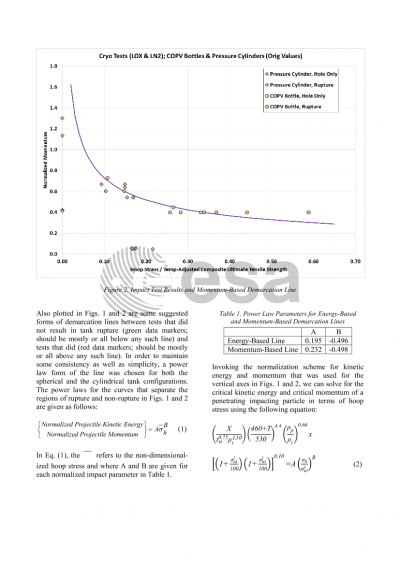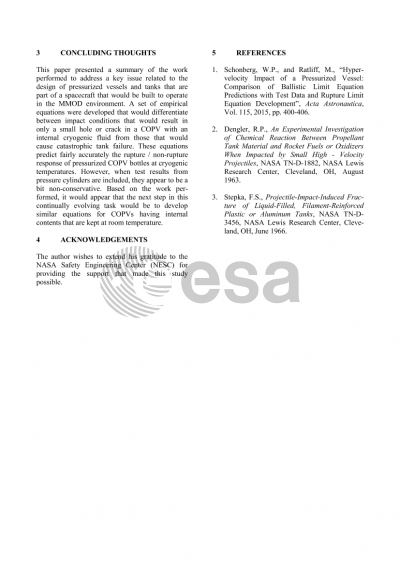Document details

Abstract
Most spacecraft have at least one pressurized vessel on board. For robotic spacecraft, it is usually a liquid propellant tank. In some satellite or spacecraft designs, the fuel tank or some other pressurized vessel is necessarily exposed to the hazards of space, including the micro-meteoroid and orbital debris (MMOD) environment. Because of the potential of serious mission-threatening damage that might result following an on-orbit MMOD impact, one of the primary design considerations of such spacecraft is the anticipation and mitigation of the possible damage that might occur in the event of such an impact. While considerable energy and effort has been expended in the study of the response of non-pressurized spacecraft components under room temperature conditions to MMOD impacts, technical and safety challenges have limited the number of tests that have been conducted on pressurized elements of such spacecraft, especially under cryogenic conditions. This paper presents the development of a data-driven equation for composite material pressure vessels (COPVs) under cryogenic operating conditions that differentiates between impact conditions that, given a tank wall perforation, would result in only a small hole or crack from those that would cause catastrophic tank failure. These equations would be useful to a spacecraft designer who might be able to tailor the design parameters and operating conditions of a tank so that if that tank were to be struck and perforated by the impact of an MMOD particle, then only a hole would occur and additional sizable debris would not be created as a result of that impact.
Preview






